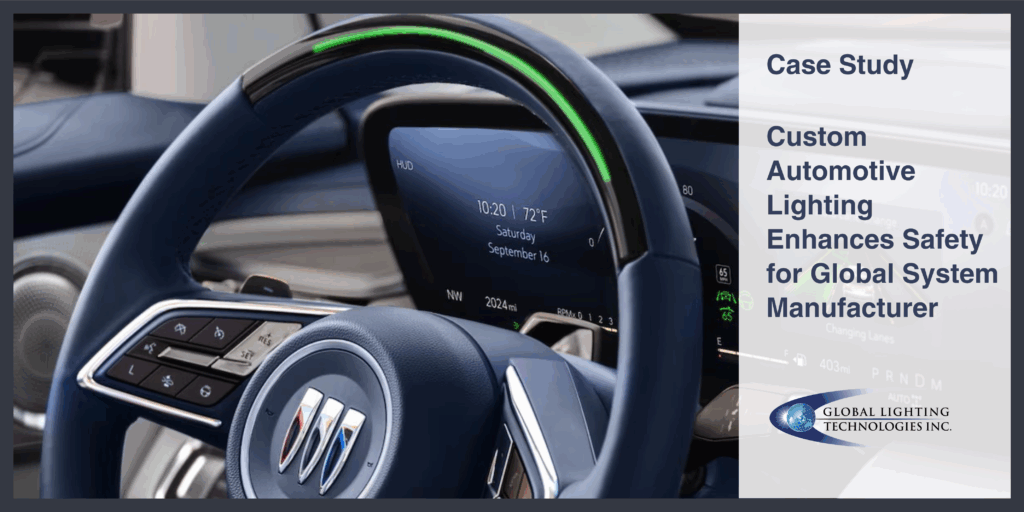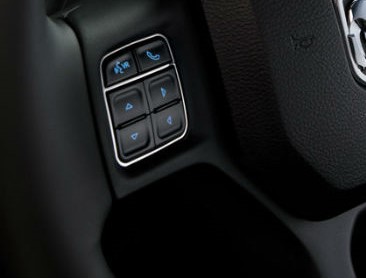
When a global automotive safety system manufacturer approached us, they were exploring a growing automotive lighting trend: integrating safety-focused illumination directly into steering wheels. This idea feels intuitive; drivers already keep their hands and eyes there, so it’s logical to use that space to communicate critical information with light.
I’ve seen how carmakers increasingly use lighting as a tool for ambience and safety, and steering wheels are quickly becoming part of that conversation1.
For us, this wasn’t a technical challenge. My team took this opportunity to advance driver safety with an innovative application of light.
The Opportunity
The customer needed precise, multi-color illumination to alert drivers with clarity and speed. The solution had to meet demanding performance requirements while complying with stringent automotive certification standards, such as IATF 16949.
This wasn’t our first collaboration with them. We had already partnered on previous steering wheel projects, so their team trusted our process, technology, and ability to deliver. Their goal this time was to incorporate new LEDs, including multi-color options with specific color points, into a light guide capable of seamlessly blending these sources.
In short, they asked us to take what was already possible in automotive lighting and push it further while ensuring the same level of safety and quality that their brand is known for.
The Solution
Our technical approach began with LED selection. There are countless LED packages available, and each comes with trade-offs. The customer’s requirements were broad and demanding, so we needed to balance performance, package type, and placement carefully.
We started by narrowing down overlapping requirements to identify where a single LED could serve multiple purposes. From there, we analyzed performance differences—since not all LEDs behave the same—and simulated various combinations to refine LED selection and placement.
Light guide design was the next critical step. It had to unify multiple light sources into a cohesive output while still achieving precise color targets. Close collaboration with the customer ensured that every stage of the process stayed aligned with safety and certification standards.
The challenges were significant, particularly to meet strict color accuracy and ensure illumination consistency, but through simulation, prototyping, and iteration, we were able to provide a near-final solution.
The Results
We recently delivered a prototype module to the customer. Their reaction confirmed we were on the right path. They were excited to see a design that was likely very close to the final product. Of course, new questions emerged, especially around finding the optimal LEDs to achieve certain color points, but that’s a natural part of our proven prototype process.
Compared to traditional automotive lighting, this solution places indications directly in front of the driver, right on the steering wheel. This proximity increases awareness while minimizing distraction. Much of the application is about ambience and indication, but when it comes to safety, the ability to alert drivers in their line of sight is invaluable.

Looking ahead, I see tremendous potential for this technology in other areas of the vehicle. Steering wheels are just one application. There are unique uses of light for communication to enhance safety across the cabin. Because the technology leverages existing LED solutions, it’s cost-effective enough to expand beyond premium trims into more mainstream models.
Enhance Safety and Aesthetics with Custom Automotive Lighting
This project demonstrates how thoughtful innovation in automotive lighting can transform driver safety. At GLT, we’re proud to help our customers bring these concepts to life with solutions that meet the highest standards of quality and performance.
If your team is exploring new ways to integrate lighting into vehicles—whether for ambience, safety, or both—I’d encourage you to reach out here. Together, we can design solutions that not only meet technical requirements but also make driving safer for everyone.
1 Intelligent steering wheel solutions drive greater safety in autonomous driving, Electropages